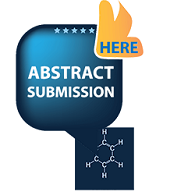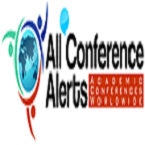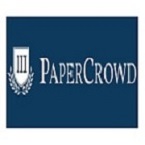Renowned Speakers
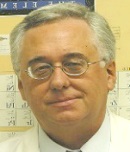
Valery Petrenko
Auburn University, USA USA

Angeles Pinero Lopez
University of Barcelona, Spain Spain
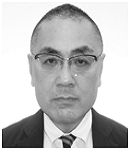
Kazuo Yano
Tokyo Women’s Medical University, Japan Japan

Mario Bertazzoli
Helsinn Healthcare SA, Switzerland Switzerland

Satyanarayana Somavarapu
UCL School of Pharmacy, UK UK

Aaron Damien Barzey
ADB Medical, UK UK

Greg Koski
Alliance for Clinical Research Excellence and Safety, USA USA

Kriss Harris
SAS Specialists Ltd, UK UK
Recommended Global Chemistry Webinars & Conferences
Asia Pacific & Middle East
Advanced Chromatography 2024
About Conference
The organizing committee for Advanced Chromatography 2024 invites analytical experts, researchers, professors, students, and industry professionals to attend the 16th International Conference and Expo on Chromatography Techniques. The conference will be held May 16-17, 2024 in Rome, Italy.
The conference aims to provide a forum for researchers in analytical chemistry, pharmacy, pharmacology, bioinformatics, and other life sciences to share critical analyses of new data and cutting-edge research findings related to advances in HPLC and other chromatography techniques. The conference offers an opportunity for analytical experts from diverse scientific backgrounds to present their research and for students and young researchers to learn from more experienced scientists.
The conference focuses on spreading knowledge about chromatography and unveiling recent advances in HPLC techniques. Analytical techniques are essential tools for research in both life sciences and chemical sciences. Advanced Chromatography 2024 provides an ideal venue for sharing knowledge and developing expertise in key analytical tools.
Target audiences for the conference include:
- Analytical experts in chromatography
- Research directors at research centers
- Directors at pharmaceutical and chemical companies
- Industry experts working with new solid and liquid columns
- Marketing teams promoting new products
- University professors and directors
- Postdoctoral researchers and PhD students developing analytical and bioanalytical methods
- Theoretical scientists proposing new analytical hypotheses
- Relevant graduate and undergraduate students
The global market for life science and chemical instrumentation is expected to reach $48.84 billion by 2020, with a CAGR of 6.9%. Growth factors include technological improvements in analytical instruments, increased government spending on pharmaceutical R&D, greater public and private investment in life science research, growing concerns about food safety, and progress in drug discovery and clinical diagnostics. The expanding proteomics market, increasing concerns about environmental safety, and rising demand for analytical instruments are creating new opportunities. The European liquid chromatography reagents market is projected to grow 11.9% annually through 2024.
We look forward to your participation in Advanced Chromatography 2024.
Benefits for young scientists include:
- A platform to present research through oral presentations
- Opportunities to share ideas with leading researchers and mentors
- Recognition through the Young Scientist Award, including a certificate and memento for winners
- Timely information through the conference forum
- Collaboration opportunities with other young researchers
- Motivation to achieve their full potential, which benefits the field overall
Sessions and Tracks
Track 1:- Major Chromatographic Techniques
Chromatography basically is a method of separation of compounds from a mixture. The technique is both analytical and preparative and is employed widely in industries as well as in laboratories. Chemical analysis is mostly done all over the world with chromatography or any other various techniques related to chromatography. Chromatography is a physical technique and has a vast application in chemical field starting from basic analytical chemistry to forensic science.
Related Societies: German Chemical Society; Italian Society for Separation Science; British Mass Spectrometry Society; Royal Netherlands Chemical Society; Swedish Mass Spectrometry Society; Swedish Chemical Society; Chromatography and Electrophoresis Group of the Czech Chemical Society; Separation Sciences Foundation of Denmark; Association Francophone des Sciences Separatives; Hungarian Society for Separation Science.
Track 2:- Advances in Chromatography-HPLC Instrumentations
HPLC is a popular method of analysis for natural products because of its high accuracy, precision and is not differed by the stability or the volatility of the compounds. HPLC combined with diode array detector (HPLC-DAD), mass spectrometer (HPLC-MS) have been successfully utilized for the qualitative and quantitative determination of various types of phyto-constituents like alkaloids, glycosides, tannins, tri-terpenes, flavonoids etc. HPLC methods are used readily for the determination of drug in biological fluids and pharmaceutical dosage forms. HPLC determination with spectroscopic detection is useful for routine quality control of drugs in pharmaceutical dosage forms and stability studies.
Related Societies: Korean American Chromatography Association; Australian and New Zealand Society for Mass Spectrometry; Federation of Asian Chemical Societies; Royal Australian Chemical Institute; Hong Kong Society of Mass Spectrometry, The Japan Society for Analytical Chemistry; Israel Society for Analytical Chemistry; Chromatographic Society of India
Track 3:- Chromatography & Mass Spectrometry
Liquid chromatography is a fundamental separation technique in the life sciences and related fields of chemistry. Unlike gas chromatography, which is unsuitable for non-volatile and thermally fragile molecules, liquid chromatography can safely separate a very wide range of organic compounds, from small-molecule drug metabolites to peptides and proteins. Traditional detectors for liquid chromatography include refractive index, electrochemical, fluorescence, and ultraviolet-visible (UV-Vis) detectors. Some of these generate two-dimensional data; that is, data representing signal strength as a function of time. Others, including fluorescence and diode array UV-Vis detectors, generate three dimensional data.
Related Societies: Federation of Analytical Chemistry and Spectroscopy Societies; Chinese American Chromatography Association; Association of Analytical Communities; Society for Electro analytical Chemistry; Canadian Society for Chemistry; Canadian Society for Mass Spectrometry; Society for Analytical Chemists of Pittsburgh; California Separation Science Society; Society for Applied Spectroscopy; International Society of Chemical Ecology.
Track 4:- Chromatography in Pharmacy & Pharmaceutical
One of the most characteristic features of the development in the methodology of pharmaceutical and biomedical analysis is that HPLC became undoubtedly the most important analytical method for identification and quantification of drugs, either in their active pharmaceutical ingredient or in their formulations during the process of their discovery, development and manufacturing. Chromatography and spectroscopy are orthogonal techniques, i.e. their types of information are very different and are specific. Chromatography is a separation method and spectroscopy is a technique which yields a ‘fingerprint’ of individual or from mixture of molecules. HPLC is a technique for separation, quantification and identification of components in a mixture.
Related Societies: German Chemical Society; Italian Society for Separation Science; British Mass Spectrometry Society; Royal Netherlands Chemical Society; Swedish Mass Spectrometry Society; Swedish Chemical Society; Chromatography and Electrophoresis Group of the Czech Chemical Society; Separation Sciences Foundation of Denmark; Association Francophone des Sciences Separatives; Hungarian Society for Separation Science.
Track 5:- Chromatography in Food Science Technology
With modern technology and facilities, our food supply is more diverse and more highly processed than ever before. To ensure the safety and nutritional quality of our food many countries and organization have promulgated regulations that stipulate acceptable levels for individual chemical additives, residues and contaminants in food products. Other regulations require food packaging to list ingredients relating to nutritional content, such as preservative, artificial chemicals, unsaturated and saturated fat. Food manufacturers and processors themselves must be able to assess product quality. Meeting all of these requirements is the function of food analysis. Increasingly, food analysis methods are built around high-performance liquid chromatography (HPLC), which has proven to be an optimal technology for detecting and/or quantifying the vast majority of food analytes.
Related Societies: Korean American Chromatography Association; Australian and New Zealand Society for Mass Spectrometry; Federation of Asian Chemical Societies; Royal Australian Chemical Institute; Hong Kong Society of Mass Spectrometry, The Japan Society for Analytical Chemistry; Israel Society for Analytical Chemistry; Chromatographic Society of India
Track 6:- Biochemical Applications of Chromatography-HPLC
HPLC is a very common method for metabolomics analysis. With the invention of electrospray ionization, HPLC is coupled to mass spectroscopy. HPLC has lower chromatographic resolution, requires no derivation for polar molecules and separates molecules in the liquid phase. HPLC has the advantage of much wider range of analytes measurements with a higher sensitivity than gas chromatographic methods. Relevant to proteomics, due to the complex structure and nature of proteins, instrumentation and methods development for sample clean-up, pre-concentration, fractionation, chromatographic separation and detection becomes an immediate requirement for the identification of peptides and proteins. HPLC is considered as most reliable and most sensitive technique in genomics used to determine DNA methylation. The nucleosides and nucleotides of DNA are separated and quantified by HPLC-UV method. HPLC finds applications in glycomics and lipidomics where glycan part is cleaved either enzymatically or chemically from the target and subjected to analysis.
Related Societies: Federation of Analytical Chemistry and Spectroscopy Societies; Chinese American Chromatography Association; Association of Analytical Communities; Society for Electro analytical Chemistry; Canadian Society for Chemistry; Canadian Society for Mass Spectrometry; Society for Analytical Chemists of Pittsburgh; California Separation Science Society; Society for Applied Spectroscopy; International Society of Chemical Ecology.
Track 7:- HPLC Fingerprinting in Bioinformatics & Computational Biology
Fingerprinting is a quality control model that builds upon spectroscopic and chromatographic technology. It is different from the traditional quality control model in the sense that fingerprinting looks at the “complete information” or comprehensiveness of the chromatograph, and displays integrated quality information. Comprehensiveness and fuzziness are the two basic traits of a fingerprint. The similarity of fingerprints is established through these basic traits. Fingerprint analysis focuses on accurate identification (of similar peaks), and not on precise calculation. The comparison of fingerprints emphasizes similarity and the fingerprints compared do not need to be exactly the same.
Related Societies: German Chemical Society; Italian Society for Separation Science; British Mass Spectrometry Society; Royal Netherlands Chemical Society; Swedish Mass Spectrometry Society; Swedish Chemical Society; Chromatography and Electrophoresis Group of the Czech Chemical Society; Separation Sciences Foundation of Denmark; Association Francophone des Sciences Separatives; Hungarian Society for Separation Science.
Track 8:- Analytical & Bio-analytical Applications of Chromatography
HPLC can be used in both qualitative and quantitative applications that are for both compound quantification and identification. Normal phase HPLC is rarely used now, almost all HPLC separation can be performed in reverse phase. Reverse phase HPLC (RPLC) is ineffective in for only a few separation types. HPLC is applied for molecular weight determination, in analytical chemistry, pharmaceutical and drug science, clinical sciences, food technology, and consumer products, combinatorial chemistry, polymer chemistry, environmental chemistry and green chemistry.
Related Societies: Korean American Chromatography Association; Australian and New Zealand Society for Mass Spectrometry; Federation of Asian Chemical Societies; Royal Australian Chemical Institute; Hong Kong Society of Mass Spectrometry, The Japan Society for Analytical Chemistry; Israel Society for Analytical Chemistry; Chromatographic Society of India
Track 9:- Chromatography-HPLC in Bio-Medical Research
HPLC is the most versatile of all chromatography methods but also the most complex. It was first made available in the laboratory during the 1970s and is currently used for the analysis of amino acids, peptides, proteins, carbohydrates, lipids, nucleic acids and related compounds, vitamins, hormones, metabolites, and drugs. HPLC can be coupled to various detectors such as UV, fluorescence or mass spectrometry (LC/MS and LC/MS/MS) and is routinely used for quantitative analysis in biological samples such as blood, urine and other body fluids. HPLC consists of using a liquid mobile phase to pass under high pressure a mixture of analytes extracted from the sample through a column containing the stationary phase. Analyte separation is based on differences in interaction with both the mobile phase and the stationary phase.
Related Societies: Federation of Analytical Chemistry and Spectroscopy Societies; Chinese American Chromatography Association; Association of Analytical Communities; Society for Electro analytical Chemistry; Canadian Society for Chemistry; Canadian Society for Mass Spectrometry; Society for Analytical Chemists of Pittsburgh; California Separation Science Society; Society for Applied Spectroscopy; International Society of Chemical Ecology.
Track 10:- Hyphenated Chromatography Methods
The hyphenated technique is developed from the coupling of a separation technique and an on-line spectroscopic detection technology. Several remarkable improvements in hyphenated analytical methods over the last two decades have significantly broadened their applications in the analysis of biomaterials, especially natural products, pre-isolation analyses of crude extracts or fraction from various natural sources, isolation and detection of natural products, chemical fingerprinting, testing of herbal products, de-replication of natural products, and metabolomics.
Related Societies: Korean American Chromatography Association; Australian and New Zealand Society for Mass Spectrometry; Federation of Asian Chemical Societies; Royal Australian Chemical Institute; Hong Kong Society of Mass Spectrometry, The Japan Society for Analytical Chemistry; Israel Society for Analytical Chemistry; Chromatographic Society of India
Track 11:- Chromatography-HPLC as Separation Techniques
High Performance Liquid Chromatography (HPLC) is a non-destructive procedure for resolving a complex mixture into its individual fractions or compounds. Those solutes with a high affinity for the mobile phase will spend more time in this phase than the solutes that prefer the stationary phase.The process is called chromatographic development. The fraction with greater affinity to stationary layer travels slower and shorter distance while that with less affinity travels faster and longer. Ion exchange chromatography (IEC) uses an ion exchange mechanism to separate analytes based charge difference. It is performed in columns but can also be useful in planar mode. It uses a charged stationary phase to separate compounds including cations, anions, amino acids, proteins, lipids and peptides.
Related Societies: German Chemical Society; Italian Society for Separation Science; British Mass Spectrometry Society; Royal Netherlands Chemical Society; Swedish Mass Spectrometry Society; Swedish Chemical Society; Chromatography and Electrophoresis Group of the Czech Chemical Society; Separation Sciences Foundation of Denmark; Association Francophone des Sciences Separatives; Hungarian Society for Separation Science.
Track 12:- High Efficiency & High Resolution Techniques
UHPLC (Ultra-HPLC) or UPLC (Ultra Performance Liquid Chromatography) is now being adopted in industrial labs, especially the pharmaceutical industry due to its high speed, high resolution and solvent saving. A UHPLC method uses a sub-2micron column as it reduces the analysis time by 80% and save the mobile phase consumption by a huge amount compared to the conventional HPLC. In addition, the much shorter run time significantly reduces UHPLC method development scouting time. HPLC method development principles can be applied to UHPLC method development. Micro and Nano HPLC ensure high levels of flow rate flexibility and reproducibility.
Related Societies: Federation of Analytical Chemistry and Spectroscopy Societies; Chinese American Chromatography Association; Association of Analytical Communities; Society for Electro analytical Chemistry; Canadian Society for Chemistry; Canadian Society for Mass Spectrometry; Society for Analytical Chemists of Pittsburgh; California Separation Science Society; Society for Applied Spectroscopy; International Society of Chemical Ecology.
Track 13:- Method Development & Validation
Quality can be designed to processes through systematic implementation of an optimization strategy to establish a thorough understanding of the response of the system quality to given variables, and the use of control strategies to ensure quality. The concept of method development includes modelling of the influence of values of variables on quality, design of experiments, and simplification of processes as information is collected. The extension of QbD (Quality by Design) philosophies is now applied to the development of manufacturing processes and analytical methods. The ability of a chromatographic method to successfully separate, identify and quantitate species is determined by a powerful factor called experimental design. Automation of a process is one of the keys for increasing the productivity of a research group.
Related Societies: Korean American Chromatography Association; Australian and New Zealand Society for Mass Spectrometry; Federation of Asian Chemical Societies; Royal Australian Chemical Institute; Hong Kong Society of Mass Spectrometry, The Japan Society for Analytical Chemistry; Israel Society for Analytical Chemistry; Chromatographic Society of India
Track 14:- Recent Advances in Chromatography-HPLC
The HPLC methodology applied to the analysis of biological samples makes it possible for the identification of many metabolites. Samples from two human embryos culture medium were analysed by high-pressure liquid chromatography–mass spectrometry (HPLC–MS). They work on the principle that many microorganisms have their own unique mass spectral signature based on the particular proteins and peptides that are present in the cells. Identification of unknown peaks in gas chromatography (GC-MS)-based discovery metabolomics is challenging, and remains necessary to permit discovery of novel or unexpected metabolites that may allergic diseases processes and/or further our understanding of how genotypes relate to phenotypes. Here, we introduce two new technologies and advances in pharmaceutical analytical methods that can facilitate the identification of unknown peaks.
Related Societies: Federation of Analytical Chemistry and Spectroscopy Societies; Chinese American Chromatography Association; Association of Analytical Communities; Society for Electro analytical Chemistry; Canadian Society for Chemistry; Canadian Society for Mass Spectrometry; Society for Analytical Chemists of Pittsburgh; California Separation Science Society; Society for Applied Spectroscopy; International Society of Chemical Ecology.
Track 15:- Chip Based Chromatography Separations
This includes a micro fabricated separation device. The availability of the fused-silica capillary marked a significant breakthrough for gas chromatography and all gas chromatographs manufactured were equipped to use fused silica capillary columns. Fused-silica capillaries have a huge contribution to the developments of other micro separation technologies like supercritical fluid chromatography. The success of one separation technique relies on sample introduction technologies, separation column and sensitive detectors that can preserve chromatographic fidelity of high resolution chromatographic peaks, as is evident from the many injectors and detectors optimized and available for open tubular GC. A particle packed column is comprised of a Nano litre enrichment column and a micron or sub-micron separation column packed with suitable grade of C18.
Related Societies: German Chemical Society; Italian Society for Separation Science; British Mass Spectrometry Society; Royal Netherlands Chemical Society; Swedish Mass Spectrometry Society; Swedish Chemical Society; Chromatography and Electrophoresis Group of the Czech Chemical Society; Separation Sciences Foundation of Denmark; Association Francophone des Sciences Separatives; Hungarian Society for Separation Science.
Track 16:- Market Growth of Chromatography-HPLC
The global chromatography instrumentation market is segmented on the basis of systems, consumables, applications, and regions. The report studies the global chromatography instruments market for the forecast period of 2015 to 2020. The market is expected to reach USD 9.223 Billion by 2020 from USD 7.062 Billion in 2015, at a CAGR of 5.5%. It is anticipated that North America and Europe will continue to lead the market over the next five years; the chromatography market in Asia will expand and increase its market share. The drivers behind the expansion are two-fold: first the expansion of local companies in Asia and secondly, Western Pharma outsourcing its research and manufacturing operations to Asia, particularly China and India.
Related Societies: Korean American Chromatography Association; Australian and New Zealand Society for Mass Spectrometry; Federation of Asian Chemical Societies; Royal Australian Chemical Institute; Hong Kong Society of Mass Spectrometry, The Japan Society for Analytical Chemistry; Israel Society for Analytical Chemistry; Chromatographic Society of India.
Scope and Advantages
Chromatography is used extensively in all areas of chemical analysis from typical biological compounds to those in polluted environments. The technique is extensively used by the pharmaceutical industry for both research purposes and quality control. Similarly, the biochemical and biotechnology industries widely use chromatographic techniques and in many cases, alternative methods are not available. Since its invention, chromatography has become a key tool for the separation, identification, purification, and quantification of several compounds. Chromatography is under constant development owing to the growing research needs at academic and industrial levels. This has led to the combination of HPLC with other spectroscopic techniques like NMR, MS, GC, IC, SE, and MALDI. Hyphenated HPLC techniques are now more investigated and used to combine the efficiency of more than one technique.
High-Performance Liquid Chromatography (HPLC) is the most popular analytical technique for a wide variety of samples from typical biological compounds to those in polluted environments. HPLC is unique because of its features like pressure stable column, constant and high linear velocity of mobile phase and most important densely packed column with reduced particle size, less than 10µm (less than 2µm in UHPLC).
Advanced Chromatography 2024 is an international platform for presenting research about separation techniques and related fields thus contributes to the dissemination of knowledge for the benefit of both the academia and business. This event brings together the top professionals in the field along with the highly affiliated professors to explore the advancements and latest applications achieved in the field of chromatography. Advanced Chromatography 2024 discusses various fields of analytical chemistry employed in theoretical, organic, inorganic, pharmaceutical and life science fields which mark the support for the advanced and much needed research by their study on various topics. The scientific program will focus on current advances in the research and use of chromatography and related with particular focus on its roles and applications in various fields.
Why to attend Chromatography-HPLC Congress 2024?
Advanced Chromatography 2024 will provide an opportunity and platform to detail the research works of analytical expertise from various scientific backgrounds and the same can be perceived by young researchers and students. The conference mainly aims to promulgate knowledge on chromatography and unveil the advances in Chromatography techniques. Both life sciences and chemical sciences need analytical techniques in course of research work and therefore Advanced Chromatography 2024 would be a perfect venue to share and develop knowledge on key analytical tools.
Advanced Chromatography 2024 will congregate renowned speakers, industrial experts and researchers from both academia and Pharmaceutical industry will join together to discuss their views and research. The conference will be comprised of sessions by world class experts in the field of chromatography and separation technology. In Advanced Chromatography-2024, international symposiums, B2B meetings, international workshops will also be organized to discuss the specific topics in the field of Chromatography and Chemistry.
Global Chromatography and HPLC Associations
- American Chemical Society
- American Organization of Analytical Chemists International (AOAC)
- American Society for Mass Spectrometry
- An International Separation Science Society
- Association of Analytical Communities (AOAC) International
- Association of Separation Scientists and Technologists
- Australian and New Zealand Society for Mass Spectrometry
- Austrian Society for Analytical Chemistry
- California Separation Science Society (CaSSS)
- Canadian Society for Analytical Sciences
Major Associations in Europe
- British Mass Spectroscopic Society
- ChromSoc-The Chromatographic Society
- Czech Chemical Society
- European Association for Chemical and Molecular Sciences (EuCheMS)
Market Analysis
The global chromatography market is forecast to grow at a CAGR of almost 7% during 2020-2024, and the market size will increase by USD 4.75 billion during the forecast period of 2020-2024. Between 2020-2024, the chromatography market will grow at a faster pace than the overall market growth in 2022. The growth momentum of the chromatography market is expected to accelerate in the second half of the forecast period compared to the increase in the first half.
The chromatography market is concentrated, and the degree of concentration is expected to decrease by 2024. An outlook of accelerating growth would provide opportunities to all market participants to grow. Market participants should focus on the opportunities on the demand side rather than getting overly impacted with the competitive dynamics. The accelerating growth momentum will be one of the contributing factors moderating the competitive intensity in the market over the forecast period.
Life science was the largest segment within the overall market in 2022 and will continue to remain so in 2024. The growth rate of the life science segment will be faster than the global market growth during the forecast period 2022-2024. However, the growth rate of the research and other segments will be slower than the overall market growth.
To identify growth opportunities in the chromatography market, the market has been segmented into regions that are growing faster than the overall market. These regions have been pitted against regions that have a slower growth rate than the global market in 2022-2024. Asia will grow faster than the overall market. Market growth in Europe, North America, and ROW will be slower than the global market.
Global chromatography industry overview:
Portable laboratory systems such as portable gas chromatography are being preferred over conventional systems because of their ability to provide real-time, direct, and onsite measurements of organic and inorganic analytes in a sample. With the rising requirement for rapid, high-quality analysis on-site, the demand for portable analytical systems will increase during the forecast period, boosting the growth of the chromatography market.
Chromatography market segmentation based on end-users
- Life science
- Research
- Others
The life science segment will account for the highest chromatography market share. The increasing demand for pharmaceutical drugs and drug delivery technologies and the rising investments in R&D will drive the demand for chromatography from the life sciences industry.
Chromatography market segmentation based on geographic region
- Asia
- Europe
- North America
- ROW
With a complete study of the growth opportunities for companies, it has been identified that North America will account for the highest chromatography market share throughout the forecast period. The growing focus on drug and vaccine discovery and development and the recent advancements in biotechnology and pharmaceutical research are some of the significant factors responsible for chromatography market growth in this region.
Target Audience:
- Chromatography instruments manufacturers
- Chromatography instruments distributors
- Healthcare institutions (hospitals and diagnostic centers)
- Vendors/service providers
- Research institutes
- Pharmaceutical and biotechnology companies
- Research and consulting firms
Related Companies/Industries:
- Agilent Technologies Inc.
- Bio-Rad Laboratories Inc.
- Danaher
- Shimadzu Corporation
- Thermo Fisher Scientific Inc.
- Waters Corporation
- Shimadzu Corporation
- PerkinElmer, Inc.
- Danaher Corporation
- Merck KGaA
- Restek Corporation
- Gilson, Inc.,
- JASCO
- SCION Instruments
Association & Societies:
- Global Chromatography and HPLC Associations
- American Chemical Society.
- American Organization of Analytical Chemists International (AOAC)
- American Society for Mass Spectrometry.
- An International Separation Science Society.
- Association of Analytical Communities (AOAC) International
- Chemical Institute of Canada (L'Institut de chimie du Canada)
- Chemical Research Society of India (CRSI)
- American Crystallographic Association (ACA)
- American Association of Pharmaceutical Scientists (AAPS)
Past Conference Report
Advanced Chromatography 2023
Chromatography 2023
Thanks for attending Chromatography 2023!!
We gratefully thank all our wonderful Speakers, Conference Attendees, Students, Media Partners, Associations and Exhibitors for making The 15th International Conference & Expo on Chromatography Techniques the best ever!
Chromatography 2023 is distinguished with the attendance of Editorial Board Members of supported Journals, Scientists, Young and Brilliant Researchers, Business Delegates and Talented Student communities representing more than 25 countries who made this conference rewarding and fecund.
Our 15th Advanced Chromatography was based on the theme “Exploring the Scientific and Industrial Advancements in Chromatography Techniques”
Applications of Chromatography
- High Performance Liquid Chromatography
- Advances in Gas Chromatography
- Types of Chromatography Techniques
- Analytical Chromatography
- Hyphenated Techniques in Chromatography
- Novel Techniques in Chromatography
- Multidimensional chromatography
- Separation Techniques in Chemistry
- Separation Mechanisms
The Keynote presentations were given by:
Kamal Saud Alblawia | King Abdulaziz University, chemistry, Saudi Arabia
Skender Miftari| Mitrovica, Kosovo
Petra Bajerová|University of Pardubice, Studentská 95
Luljeta| Ulpiana U2/3 Prishtina, Kosovo
Conference Series LLC Ltd wishes to acknowledge with its deep sincere gratitude to all the supporters from the Editorial Board Members of our Open Access Journals, Keynote speakers, Valuable speakers, Poster presenters, students, delegates and special thanks to the Media Partners for their promotion to make this event a huge success.
We once again thank you all for the enormous exquisite response. This inspires us to continue organizing events and conferences for furthering the Chromatography . Conference Series LLC ltd therefore, is glad to announce its “16th International Conference & Expo on Chromatography Techniques” slated on May 16-17, 2024 Rome, Italy.
Mark your calendars for the upcoming meeting we are hoping to see you soon!!!!
For More details visit: https://chromatography.pharmaceuticalconferences.com/
Past Reports Gallery
To Collaborate Scientific Professionals around the World
Conference Date May 16-17, 2024
For Sponsors & Exhibitors
Speaker Opportunity
Useful Links
Past Conference Report
Supported By
All accepted abstracts will be published in respective Conference Series International Journals.
Abstracts will be provided with Digital Object Identifier by
